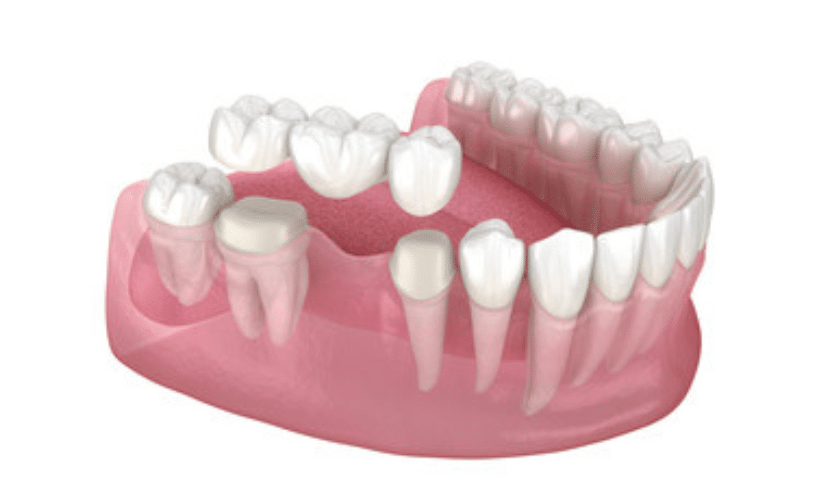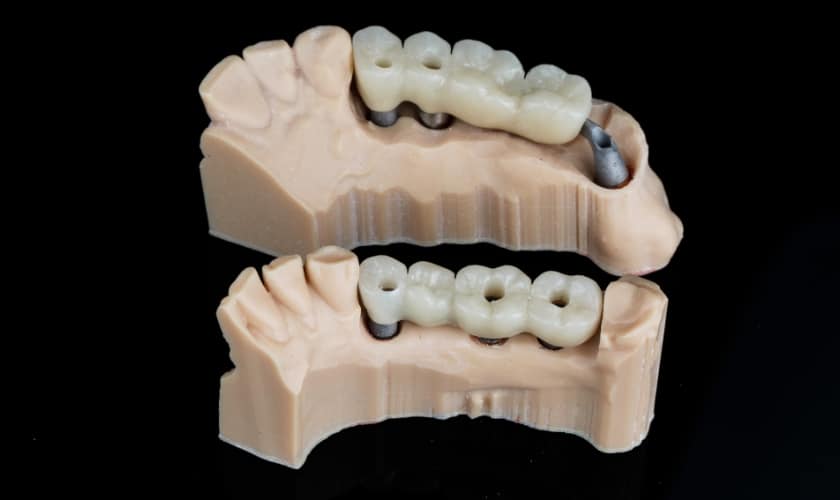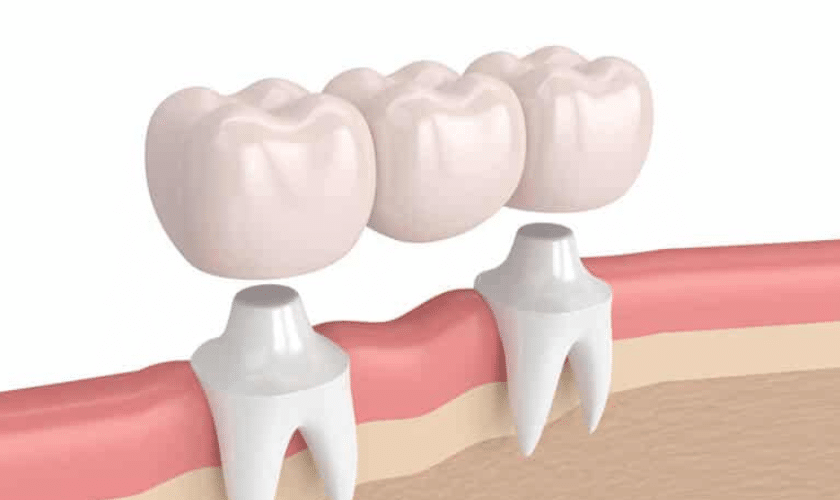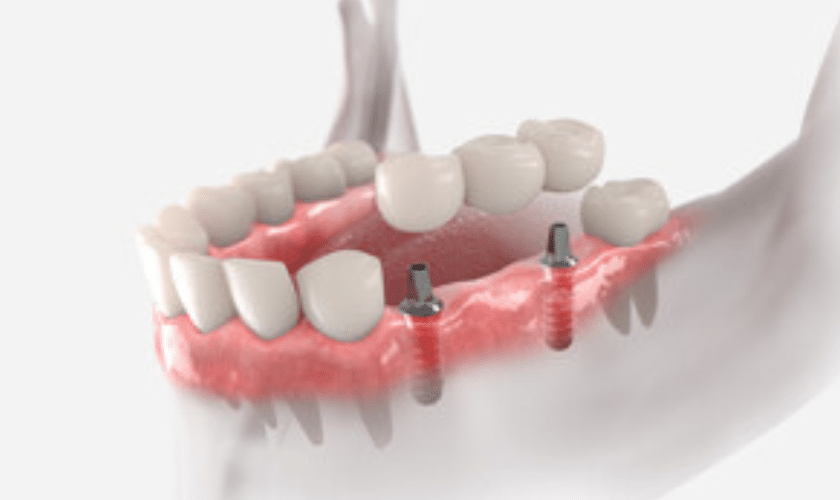
By Gentle Touch Dentistry Richardson
Are you one of the millions of people who have undergone a dental bridge procedure? Congratulations on taking the first step towards restoring your smile and improving your oral health! But it’s important to remember that proper aftercare is crucial for ensuring the longevity and effectiveness of your dental bridge. In this blog post, we’ll be sharing five essential tips for ensuring that you take care of your dental bridge in the best way possible. From understanding its intended use to seeking professional dental care as needed, we’ve got you covered. Let’s dive in!
Understand Your Bridge’s Intended Use
Before you can properly care for your dental bridge, it’s important to understand the intended use of the device. A dental bridge is a prosthetic device that is used to replace missing teeth by filling in gaps between existing teeth. It is typically made up of two or more crowns that are attached to either side of a false tooth (or teeth) in the middle.
One important thing to keep in mind when caring for your dental bridge is that it should be treated like natural teeth as much as possible. This means avoiding hard or crunchy foods that could potentially damage or dislodge the device, and being mindful when chewing.
It’s also important to note that while dental bridges procedure can be long-lasting solutions for missing teeth, they do require proper maintenance and care just like natural teeth. Therefore, it’s essential to follow any specific instructions given by your dentist regarding cleaning and upkeep.
Another key factor in understanding your bridge’s intended use is recognizing how it fits into your overall oral health plan. Dental bridges are often recommended as an alternative option for patients who aren’t candidates for other procedures such as implants or dentures.
Ultimately, taking time to familiarize yourself with your dental bridge and its intended purpose will set you up for success when it comes to maintaining good oral health and prolonging the lifespan of this valuable investment!
Get A Proper Dental Bridge Aftercare Plan In Place
Once you have received your dental bridge, it is important to create a proper aftercare plan. This will help ensure that the bridge remains in good condition and lasts for many years.
Firstly, consult with your dentist or oral health professional to get a customized plan based on your specific needs. They may recommend certain products such as special toothbrushes or flossers to use when cleaning around the bridge.
It’s also important to brush and floss regularly, paying extra attention to the area around the bridge. Use gentle but thorough motions when brushing and be sure to clean under and around any connecting wires or clasps.
Avoid eating hard or sticky foods that could damage the bridge or dislodge it from its position. Additionally, limit sugary snacks and drinks which can lead to tooth decay and gum disease.
If you experience any discomfort or notice changes in how your bridge fits, don’t hesitate to contact your dental professional for an evaluation. Early detection of issues can prevent further damage down the line.
By following these guidelines for proper dental bridge aftercare, you’ll be able to maintain good oral health while maximizing the lifespan of your new restoration!
Educate Yourself On Proper Brushing And Flossing Techniques
Taking care of your dental bridge requires you to practice good oral hygiene habits, which include brushing and flossing. However, it’s important to note that there are proper techniques for brushing and flossing when you have a dental bridge.
Firstly, use a soft-bristled toothbrush to clean your teeth thoroughly twice daily with fluoride toothpaste. Brush the surface of every tooth gently in circular motions, making sure to also brush along the gumline where plaque can accumulate. Be gentle around the abutment teeth supporting the bridge as well.
Secondly, when flossing between your teeth or under your dental bridge, be extra careful not to dislodge it by using special tools such as interdental brushes or superfloss. Slide the floss up and down each side of the abutment teeth (the ones on either end of the bridge) and then pull it through instead of lifting it back out so you don’t accidentally tug on your bridge.
Consider investing in an electric toothbrush that is designed specifically for people with dental bridges since it can help remove more plaque than manual brushing alone. With these tips in mind, you’ll be able to maintain optimal oral health while avoiding any damage or complications from improper cleaning techniques.
Take Care Of Your Teeth And Gums With Good Oral Hygiene Habits
Maintaining good oral hygiene habits is crucial for the longevity of your dental bridge and overall oral health. Brushing twice a day with fluoride toothpaste helps remove plaque buildup, which can cause gum disease and decay around the dental bridge.
Flossing daily is equally important to clean areas between teeth that a toothbrush cannot reach. When flossing with a dental bridge, it’s essential to use special floss threaders or interdental brushes designed for bridges.
In addition to brushing and flossing, rinsing your mouth with an antiseptic mouthwash can help kill bacteria that cause bad breath and gum disease. It’s also beneficial to avoid smoking or using tobacco products as they increase the risk of gum disease and damage the surrounding tissues supporting your dental bridge.
Eating a healthy diet rich in calcium, vitamins, protein, and fiber supports strong teeth and gums. Sugary foods are notorious for causing cavities; therefore, it’s best to limit their intake or brush immediately after consuming them.
Regular visits to your dentist every six months ensure any potential issues are caught early before they worsen. Your dentist will check on how well you’re caring for your dental bridge while providing professional cleaning services to keep it looking its best!
Seek Professional Dental Care As Needed
Even with excellent at-home dental bridge aftercare, it’s still important to see your dentist regularly. Your dentist can check for any issues and provide professional cleaning that helps keep your teeth healthy.
Your dental care provider may recommend additional measures such as using a fluoride toothpaste or mouthwash to help prevent decay. They may also suggest frequent cleanings if you have gum disease or other oral health concerns.
It’s essential to follow up with your dentist immediately if you experience any pain or sensitivity around the site of your dental bridge. This could indicate an issue that requires treatment, such as infection or decay.
In some cases, a poorly fitting dental bridge can cause discomfort or even lead to damage to surrounding teeth. If this occurs, your dentist will work with you to find a solution – which may include repairing the existing bridge or suggesting alternative treatments like implants.
By seeking professional care when needed, you can ensure long-lasting success for your dental bridge and maintain optimal oral health overall.
Finishing Off
Proper aftercare is critical to the longevity and effectiveness of your dental bridge. By understanding how to care for it, you can avoid costly repairs or replacements in the future.
Remember to speak with your dentist about any specific instructions they may have for caring for your particular type of bridge. Follow these five essential tips, including understanding its intended use, having a proper aftercare plan in place, educating yourself on brushing and flossing techniques, taking care of your teeth and gums, and seeking professional dental care as needed.
By following these simple steps regularly, you can help maintain a healthy smile that lasts a lifetime.






